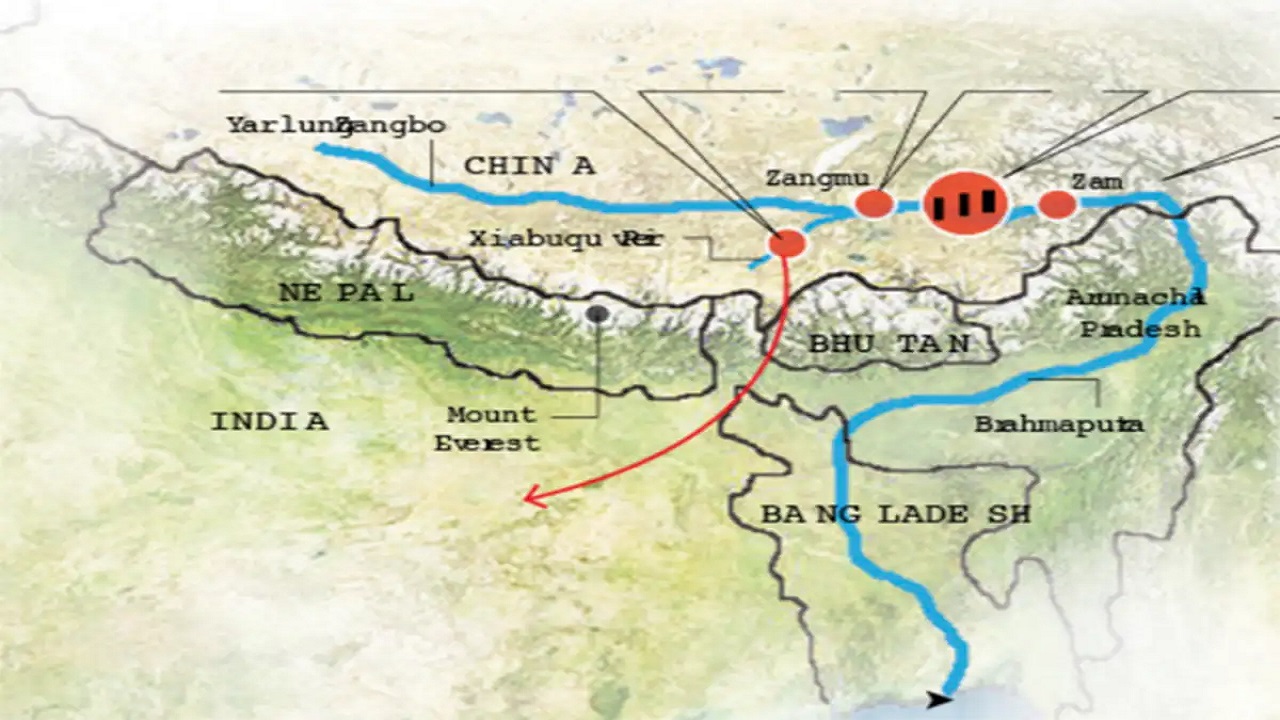Brahmaputra Dam Project: A Looming Crisis for Arunachal and Beyond
Context
China has officially commenced the construction of a massive $167.8 billion hydropower dam on the Brahmaputra River (Yarlung Zangbo) in Tibet, near the Indian border in Arunachal Pradesh. This project is located near the "Great Bend", just before the river enters India as the Siang. Once completed, it is expected to be the largest hydropower dam in the world, with a capacity of 60,000 MW.
Introduction
The dam project has triggered significant concerns in India and Bangladesh, both of which are downstream riparian states. Fears revolve around potential alteration in river flow, risks of flooding, ecological degradation, and geopolitical implications. India continues to monitor the developments closely while also engaging diplomatically.
Key Concerns and Regional Responses
Arunachal Pradesh’s Response:
-
The Chief Minister of Arunachal Pradesh has termed the project an "existential threat", describing it as a potential “water bomb”.
-
He warned that a sudden water release could cause severe flooding in the Siang region.
-
There are fears that the long-term flow of the river could be drastically reduced, impacting local livelihoods and tribal communities.
-
Experts highlight the seismic vulnerability and ecological fragility of the zone where the dam is being built.
Assam’s Perspective:
-
The Chief Minister of Assam offered a more balanced view, noting that the Brahmaputra becomes a major river only after entering Assam, where it is fed by tributaries from Bhutan and Arunachal Pradesh as well as monsoon rains.
-
He stated that China contributes only 30–35% to the Brahmaputra's total flow, mostly through glacial melt and Tibetan rainfall.
-
He suggested that reduced flow from China may help in flood management during monsoons.
-
However, he acknowledged the existence of various uncertainties and theories regarding the dam’s downstream impact.
India’s Official Stand and Diplomatic Engagement
-
India has not issued a formal response to the groundbreaking ceremony, but continues to closely monitor the situation.
-
The Ministry of External Affairs (MEA) has reiterated:
-
India’s status as a lower riparian state with established rights
-
The need for transparency, consultation, and data-sharing
-
-
In January, MEA urged China to avoid actions that could affect downstream interests.
-
China has responded by asserting its sovereign rights and promising hydrological cooperation.
Diplomatic Efforts:
-
In October 2024, both countries agreed on patrolling arrangements along the LAC to ease earlier tensions.
-
In March 2025, talks included cross-border cooperation, including river management.
-
India resumed issuing tourist visas to Chinese nationals and restarted the Kailash Mansarovar Yatra, indicating cautious diplomatic engagement.
India’s Mitigation Strategy
Strategic and Technical Measures:
-
Experts recommend scientific assessments and infrastructure development to manage uncertain flows.
-
Construction of storage structures on Brahmaputra tributaries is considered essential.
-
The Upper Siang Project in Arunachal Pradesh, featuring a 300-metre-high dam, is viewed as vital for both hydropower generation and flow regulation, though delayed due to environmental opposition.
-
Suggestions include creating inland water channels to divert excess water and long-term river interlinking between the Brahmaputra and Ganga basins.
Regional Coordination:
-
Continuous access to hydrological and project data from China is considered critical.
-
Coordination with Bangladesh, Bhutan, and Myanmar is essential to develop early warning systems and enhance disaster preparedness protocols.
Conclusion
China’s hydropower project on the Brahmaputra poses a complex mix of environmental, strategic, and geopolitical challenges. While India remains diplomatically engaged, a robust response involving scientific planning, regional cooperation, and infrastructure development is imperative to safeguard the interests of downstream states and maintain riverine security in the eastern Himalayan region.




Comments (0)